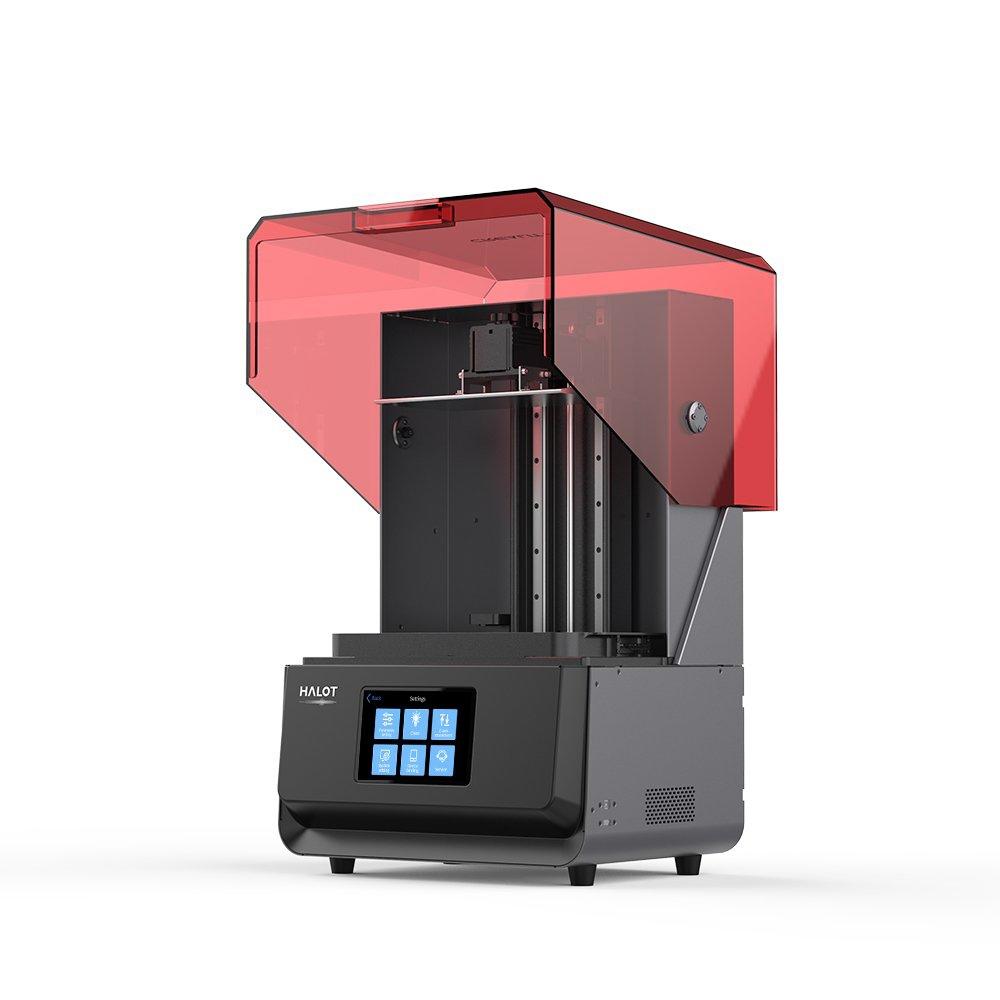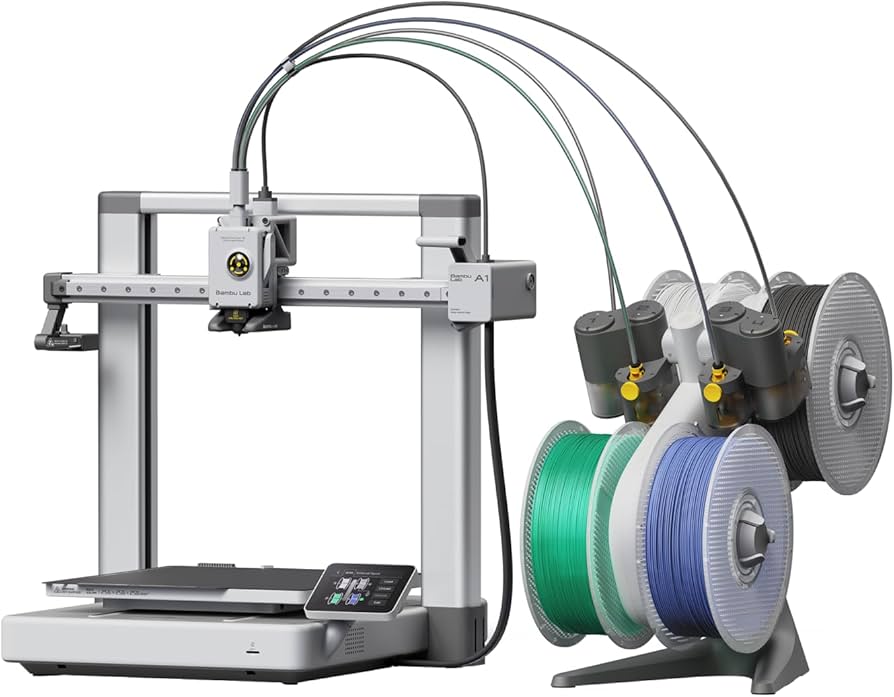Compare Halot Max vs A1
Comparison between the best 3D printers
Choose the best 3D printer at the best price. The cheapest 3D printers are here.
Buy a 3D printer here with 3D Fila.
 |
 |
|
| Model | Halot Max[BUY Halot Max] |
A1[BUY A1] |
| Printing Material | Resin | Filament |
| Buy Resin for Creality 3D Halot Max | Buy Filament forBambu Lab A1 | |
| Estimated price | $3000,00 | $700,00 |
| Manufacturer | Creality 3D | Bambu Lab |
| Release Year | 2021 | 2023 |
| Print Volume [mm] | 293x165x300 | 256x256x256 |
| Printer Size [mm] | 480x387x770 | 385x410x430 |
| Weight [kg] | 32,5 | 8,3 |
| Power Loss Recovery | NO | YES |
| Maximum Resolution [mm] | 0,03 | 0,1 |
| Processor | ||
| Display | Display touchscreen 5'' | Touchscreen 3,5 |
| Power Supply | 350 W | |
| Connectivity | SD / USB / Wi-Fi | Wi-Fi, Bambu-Bus, Cartão Micro SD |
| Operating systems | Windows, Mac, Linux | Windows, Linux, Macbook |
| Date of registration in the system | 2022-11-04 | 2024-07-17 |
| Release date | 2021 | 2023 |
| Extra features | The Halot Max printer stands out for its large print size (293 x 165 x 300 mm) and uses SLA technology. It has an integral light source for improved accuracy and a strong core with an advanced operating system. Its Z-axis module ensures high precision, supported by efficient slicing software. The machine offers online OTA updates and boasts an adjustable layer thickness between 10 and 200 microns. Its XY-axis resolution is 3840*2160, with 0.05 mm accuracy, and an integral 405nm light source. The printer includes a 5" touchscreen and multiple connectivity options, such as USB, Creality Cloud, and HALOT BOX WiFi. With cutting-edge technology, the Halot Max is ideal for printing small models with uniform precision, thanks to its self-developed lighting system and stable printing mechanism, which includes dual linear guides, ball screws, and an intelligent brake system. | The BambuLab A1 printer features fully automatic calibration, multi-color printing with the AMS system, active flow rate compensation, quick nozzle change with a clip, active motor noise cancellation, a build volume of 256x256x256 mm³, a maximum extruder temperature of 300°C, and a heated bed of up to 100°C. In addition, it has high precision, a machine health management system and an intuitive 3.5-inch touchscreen interface. |
| Support for multiple colors and materials (AMS and CFS) | NO | YES |
Notes * |
||
| Cost-benefit | 5 / 10 | 7 / 10 |
| Hardware | 1 / 10 | 4.2 / 10 |
| Tela | . | . |
| Print volume | 3 / 10 | 4 / 10 |
| Performance | 9 / 10 | 4 / 10 |
| [BUY Halot Max] | [BUY A1] |
Conclusion |
| In comparing the Creality 3D Halot Max and the Bambu Lab A1, it becomes clear that each printer serves different user needs and priorities. The Halot Max excels in high print volume and precision, making it preferable for detailed work requiring fine resolution, particularly for small parts where accuracy is paramount. Its extensive connectivity options and powerful performance position it well for advanced users seeking quality output and robust features. However, it comes at a significantly higher price point and may lack certain user-friendly features expected in modern 3D printers, such as power loss recovery and multi-material support. On the other hand, the Bambu Lab A1 offers an impressive balance of affordability, performance, and convenience. With its fully automatic calibration, support for multi-color and material printing, and improved ergonomics, it is well-suited for hobbyists and more casual users. The A1's lower weight and compact dimensions make it easier to handle and fit in various spaces, while its advanced features such as active flow rate compensation and noise cancellation enhance the user experience. Ultimately, if budget allows and the focus is on high precision and larger print sizes, the Halot Max is an excellent choice. However, for those seeking a more user-friendly and cost-effective solution, particularly in diverse printing scenarios, the Bambu Lab A1 emerges as a strong contender. The choice between these two printers should consider specific printing needs, technical expertise, and budget constraints. |

